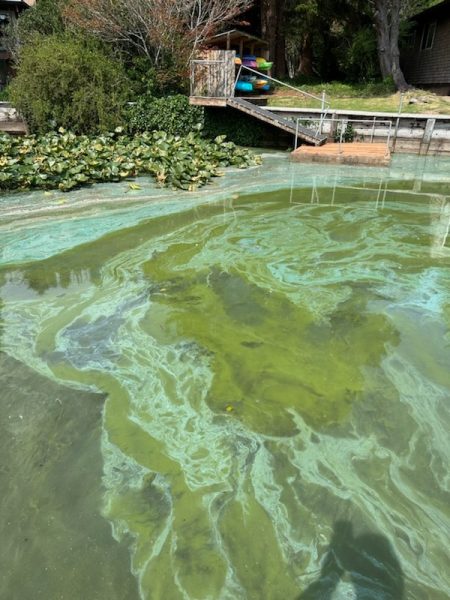“A report of blue-green algae has been reported in the Indian Shores cove. The Department of Environmental Quality (DEQ) visited Devils Lake on 8/28 and determined microcystin blooms throughout the Lake and collected water samples.
In coordination with Oregon Health Authority (OHA) issued a precautionary advisory for Devils Lake. The Lake will remain in a precautionary advisory until additional water samples can be administered in the coming weeks.”
According to Boone Marker Devils Lake Water District (DLWID) manger people and animals should avoid ingesting water from the lake until notified.
“Should the bloom get worse then OHA could issue an official ‘Advisory’ and close all access to the lake.”
According to information from the DEQ, “Cyanotoxins are produced and contained within the cyanobacterial cells (intracellular).
The release of these toxins in an algal bloom into the surrounding water occurs mostly during cell death and lysis (i.e., cell rupture) as opposed to continuous excretion from the cyanobacterial cells.
Although important to a variety of organisms and to the food webs they support, excessive growth of cyanobacteria can lead to “blooms” that can cause ecological and human health concerns. Cyanobacteria and green algae blooms are often confused, since both can produce dense surface and water column growths that can impede recreation (swimming, boating and fishing), cause unwanted odor issues (especially in drinking water and fish tissue), and contribute to oxygen depletion. However, unlike cyanobacteria, green algae are not generally known to produce toxins. In contrast, some cyanobacteria are able to produce highly potent toxins, known as cyanotoxins, that can lead to a variety of health problems for both human and aquatic species (e.g., abdominal, neurological, and skin issues).
Once these toxins are released, they can cause numerous health effects ranging from minimal (i.e., diarrhea, headaches, and skin irritation) to life threatening (i.e., death). (our bold type)
You can also follow our official Facebook account and www.dlwid.org for meeting agendas, updates on district projects, events, and other matters.
|


